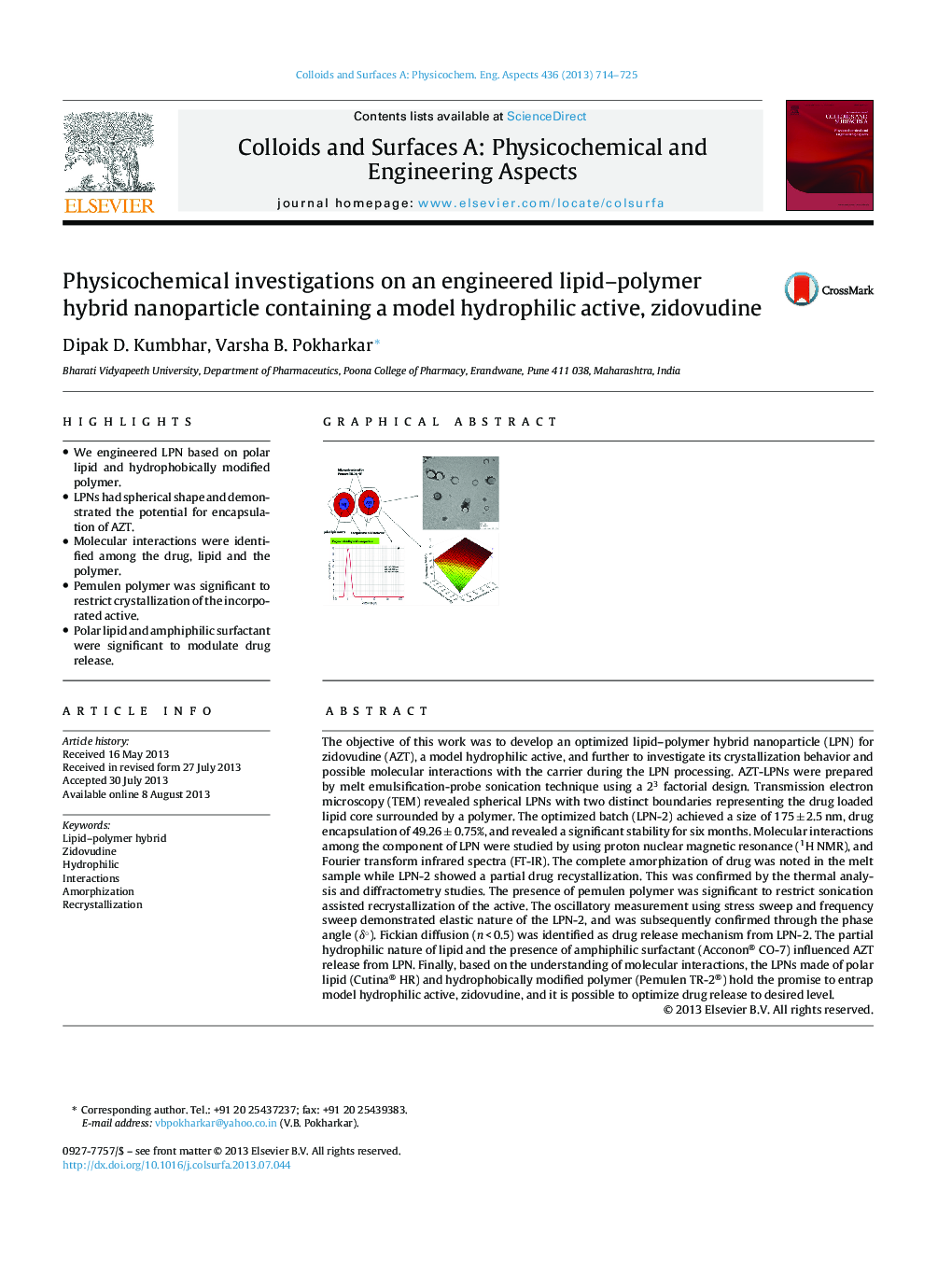| کد مقاله | کد نشریه | سال انتشار | مقاله انگلیسی | نسخه تمام متن |
|---|---|---|---|---|
| 593405 | 1453937 | 2013 | 12 صفحه PDF | دانلود رایگان |

• We engineered LPN based on polar lipid and hydrophobically modified polymer.
• LPNs had spherical shape and demonstrated the potential for encapsulation of AZT.
• Molecular interactions were identified among the drug, lipid and the polymer.
• Pemulen polymer was significant to restrict crystallization of the incorporated active.
• Polar lipid and amphiphilic surfactant were significant to modulate drug release.
The objective of this work was to develop an optimized lipid–polymer hybrid nanoparticle (LPN) for zidovudine (AZT), a model hydrophilic active, and further to investigate its crystallization behavior and possible molecular interactions with the carrier during the LPN processing. AZT-LPNs were prepared by melt emulsification-probe sonication technique using a 23 factorial design. Transmission electron microscopy (TEM) revealed spherical LPNs with two distinct boundaries representing the drug loaded lipid core surrounded by a polymer. The optimized batch (LPN-2) achieved a size of 175 ± 2.5 nm, drug encapsulation of 49.26 ± 0.75%, and revealed a significant stability for six months. Molecular interactions among the component of LPN were studied by using proton nuclear magnetic resonance (1H NMR), and Fourier transform infrared spectra (FT-IR). The complete amorphization of drug was noted in the melt sample while LPN-2 showed a partial drug recystallization. This was confirmed by the thermal analysis and diffractometry studies. The presence of pemulen polymer was significant to restrict sonication assisted recrystallization of the active. The oscillatory measurement using stress sweep and frequency sweep demonstrated elastic nature of the LPN-2, and was subsequently confirmed through the phase angle (δ°). Fickian diffusion (n < 0.5) was identified as drug release mechanism from LPN-2. The partial hydrophilic nature of lipid and the presence of amphiphilic surfactant (Acconon® CO-7) influenced AZT release from LPN. Finally, based on the understanding of molecular interactions, the LPNs made of polar lipid (Cutina® HR) and hydrophobically modified polymer (Pemulen TR-2®) hold the promise to entrap model hydrophilic active, zidovudine, and it is possible to optimize drug release to desired level.
Figure optionsDownload as PowerPoint slide
Journal: Colloids and Surfaces A: Physicochemical and Engineering Aspects - Volume 436, 5 September 2013, Pages 714–725